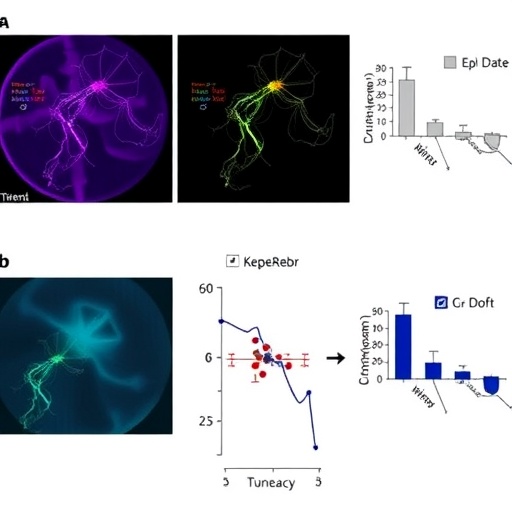In a groundbreaking study poised to redefine our understanding of ancient pandemics, researchers have, for the first time, identified direct genomic evidence of Yersinia pestis—the bacterium responsible for plague—at the heart of the Plague of Justinian in the Eastern Mediterranean. This discovery, emerging from an interdisciplinary collaboration between scientists from the University of South Florida (USF), Florida Atlantic University (FAU), and international partners in India and Australia, confirms long-suspected links between historical accounts and biological reality, firmly establishing the microbial culprit behind the world’s earliest recorded pandemic approximately 1,500 years ago.
The Plague of Justinian, which devastated the Byzantine Empire from AD 541 to 750, has haunted historians and epidemiologists alike, given its catastrophic toll on populations and its profound impact on the course of Western civilization. Until now, evidence for the presence of Y. pestis had been limited to remote Western European sites far from the known epicenter of the pandemic. However, by applying cutting-edge ancient DNA (aDNA) techniques to human remains excavated at Jerash, Jordan—a city situated less than 200 miles from the initial documented outbreak location in ancient Pelusium, Egypt—the team has unlocked a definitive genetic window into this catastrophic event.
The research focused on sequencing DNA extracted from eight human teeth recovered beneath what was once the Roman hippodrome in Jerash. The site’s transformation into a mass burial ground during the mid-sixth to early seventh centuries corresponds precisely with written historical accounts describing waves of mortality consistent with plague. The genomic data revealed striking genetic uniformity among the Y. pestis strains, underscoring a swift and devastating epidemic that overwhelmed this key urban hub of the Eastern Roman Empire.
Professor Rays H. Y. Jiang of USF, the lead principal investigator, emphasized the significance of this finding: “Our ability to recover and sequence Y. pestis DNA directly from the pandemic’s epicenter resolves a centuries-old debate. It provides unequivocal evidence linking this infamous pathogen to one of history’s deadliest plagues, offering invaluable insight into how the outbreak shaped human history.” The findings bridge a crucial gap that had long hindered comprehension of the plague’s origins and spread within Byzantine territories.
This discovery also contributes to a growing body of research on the evolutionary history and epidemiology of Y. pestis. A companion study led by the same team analyzed hundreds of ancient and modern Y. pestis genomes, revealing that plague bacteria have circulated globally among human and animal populations for millennia prior to the Justinian outbreak. Notably, later pandemics such as the Black Death of the 14th century did not descend from a single ancestral source, but instead arose independently from persistent zoonotic reservoirs. This pattern contrasts sharply with recent viral pandemics like COVID-19, which originate from a singular spillover event followed by sustained human-to-human transmission.
Modern relevance underpins this ancient investigation. Although plague is often thought of as a historical relic, Y. pestis continues to infect humans in sporadic outbreaks worldwide. Recent cases, such as a fatal pneumonic plague infection documented in northern Arizona in July 2025—the first U.S. death from the disease in nearly two decades—and another confirmed case in California, underline the pathogen’s ongoing threat and evolutionary persistence. These modern manifestations echo the epidemiological dynamics rooted deep in human history.
Greg O’Corry-Crowe, a research professor at FAU involved in the study, reflected on the profound human dimension this research evokes: “Handling ancient remains brings us into intimate contact with individuals who lived through extraordinary times. Melding modern genomics with historical anthropology enables us to resurrect their stories, illuminating not only the past but informing present health challenges.” The empathetic interplay between cutting-edge technology and historical inquiry renders this research uniquely compelling.
The rapid genetic uniformity observed among the Jerash plague victims implies a sudden and intense outbreak, devastating the urban fabric of the Eastern Roman empire. This raises broader questions about how ancient cities responded to public health crises and how such events shaped civic infrastructures and societal resilience. Jerash serves as an archaeological and genomic testament to the overwhelming toll exacted by plague on densely populated centers serving as critical nodes for commerce and cultural exchange.
Importantly, the team is now extending their research geographical and temporal scope to include Venice, Italy, and its Lazaretto Vecchio quarantine island. The Lazaretto houses remains from Black Death-era mass graves, offering a rare opportunity to track pathogen evolution alongside the earliest public health measures. These investigations promise to shed light on the interplay between pathogen adaptation, urban vulnerability, and human interventions in the face of pandemics.
The implications of these findings resonate deeply in today’s context, as they emphasize how pandemics are not singular historical anomalies but recurring biological phenomena tightly intertwined with human behavior, ecological shifts, and societal structures. The persistence of pathogens like Y. pestis exemplifies that containment and eradication are complex challenges, compounded by evolutionary pressures and environmental factors.
In light of ongoing global health crises, the parallels and distinctions between bacterial pandemics such as plague and viral outbreaks like COVID-19 are instructive. Where COVID-19’s rapid evolution and transmission underscore the dangers of recent zoonotic spillovers, the millennia-long history of Y. pestis highlights how pathogens with complex reservoirs can endure and resurface repeatedly across time and geography.
This landmark research, heralded in leading scientific journals, not only enriches our comprehension of ancient pandemics but also reinforces the enduring interplay between human civilization and infectious disease. As researchers unravel these genetic narratives, they provide essential knowledge for anticipating and mitigating future outbreaks, reaffirming the necessity of vigilance, scientific innovation, and global cooperation in public health.
Subject of Research: People
Article Title: Genetic Evidence of Yersinia pestis from the First Pandemic
News Publication Date: August 27, 2025
Web References:
Newly published papers
Companion study
Reported recent US plague fatalities
Recent plague case in California
References: Genes Journal, July 31, 2025
Image Credits: Greg O’Corry FAU
Tags: ancient DNA techniques in archaeologyancient pathogensarchaeological discoveries in JordanByzantine Empire pandemicscollaboration in global health researchgenomic evidence of plaguehistorical epidemiology studiesimpact of the Plague of Justinianinterdisciplinary research in ancient pandemicsorigins of the Plague of Justinianunderstanding ancient infectious diseasesYersinia pestis genome analysis





